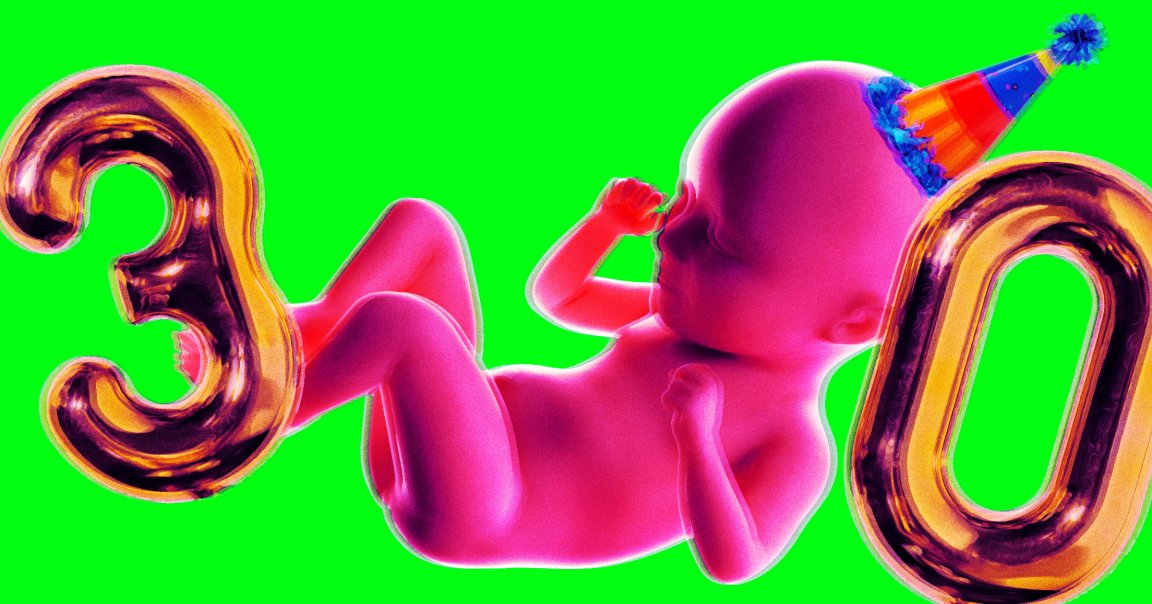
The world’s “oldest baby” has been born to a couple who are, technically, just a few years older than the newborn himself.
As MIT Technology Review reports, Ohio couple Lindsey and Tim Pierce, aged 35 and 34 respectively, welcomed their new baby Thaddeus on July 26. That joyous occasion was made possible by a 30-year-old embryo from a woman named Linda Archerd, who in 1994 froze four of her own when seeking in-vitro fertilization (IVF) treatment.
Though it’s certainly not the first time a baby has been born of an aging embryo, Thaddeus’ birth has now broken the record for the oldest embryo to produce a child, resulting in headlines somewhat comically calling him the “world’s oldest baby.”
Still, it’s been quite the journey for Archerd, now 62.
Of the four fertilized eggs she froze, Tech Review explains, one begat her daughter, who is now 30 and a mother herself. She decided to keep the other three because she wanted more children, but after divorcing her first husband, she learned she’d have to keep the embryos on ice for them to retain viability.
Despite costing roughly $1,000 per year in storage — which would be worth more than $2,000 today with inflation — Archerd kept the embryos because eventually, she wanted them to result in another child that she would one day meet. Eventually, she learned about so-called embryo “adoption,” which allows embryo donors to select the needy family who gets their fertilized eggs. (As the article notes, this is typically overseen by explicitly Christian agencies, and both Archerd and the Pierces are indeed devout Christians.)
Because of the embryos’ age, by the time Archerd learned of this “adoption” scheme, many of the agencies contacted wouldn’t even take her information down, she told Tech Review. Eventually, she came across one who would — the Nightlight Christian Adoptions agencies, which accepted the aging embryos into its Snowflake embryo adoption program in 2022.
As explained by Beth Button, the aptly-named executive director of agency, the “matching process is really driven by the preferences of the placing family.” Archerd had a pretty narrow list of criteria: she wanted the adopting family to be white, married, Christian, and living in the US — and even those who would have matched often would not be able to use the embryos because they were too old for the fertility clinics with which they worked.
Indeed, upon learning about the Snowflakes program, the Pierces were flabbergasted and intrigued by the prospect.
“We thought it was wild,” the mother, Lindsey, told Tech Review. “We didn’t know they froze embryos that long ago.”
Because the embryo-freezing process has changed so significantly over the years, there was also the issue of viability — but in the Pierces’ case, all three survived as if by miracle.
With two of the three implanted into Lindsey’s uterus on November 14, one developed into the fetus that became Thaddeus, another little miracle on his long and winding road.
After a “rough” birth, both mother and son are doing well, and aren’t perturbed by the fact that their church friends and families think Thaddeus’ birth was “like something from a sci-fi movie.”
“We didn’t go into it thinking we would break any records,” the new mother told Tech Review. “We just wanted to have a baby.”
More on unique embryos: New IVF Startup Claims It Can Predict an Embryo’s IQ